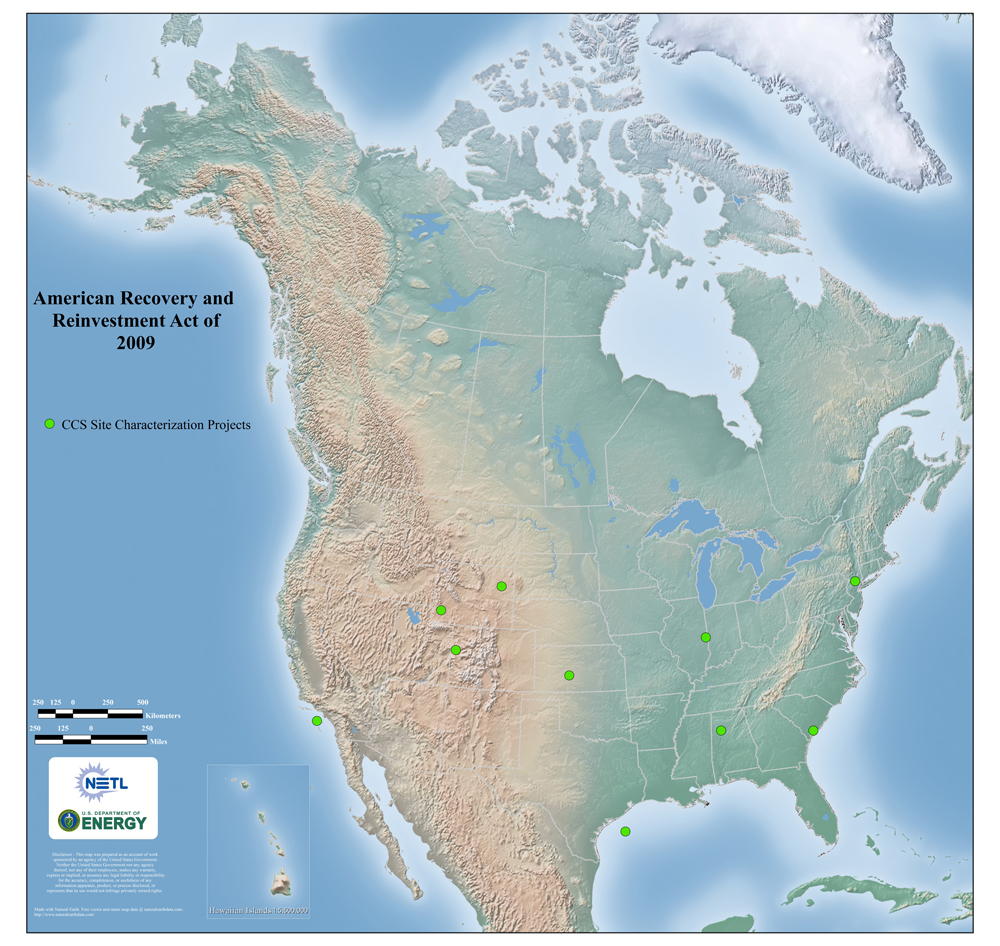Geologic Carbon Sequestration
Geologic sequestration is the underground storage of CO2 in existing geologic formations. The following six types of repositories provide the best opportunities for permanent sequestration: 1) oil reservoirs 2) natural gas deposits 3) unmineable coal seams 4) deep saline formations 5) shale rich in oil or gas 6) basalt formations.
All sequestration techniques involve extensive monitoring, mitigation and verification (MMV) and continuous risk assessment of the site. Effective application of proper MMV procedures will ensure the safety of carbon sequestration techniques with regards to human and environmental health.

3-D Representation of the CO2 Sequestration Method
(Image and Information Courtesy of the University of Utah Carbon Science & Engineering Research Group)
Geologic Characterization of the South Georgia Rift Basin for Source Proximal CO2 Storage
U.S. Department of Energy, National Energy Technology Laboratory
Carbon capture and storage, focused on curbing the increase in greenhouse gas emissions into the global atmosphere, is an emerging issue with governments and private industry around the world. Terrestrial and geologic sequestration of carbon dioxide (CO2) are receiving considerable attention. As evidence of this interest, the University of South Carolina and its research partners, including the South Carolina Geological Survey, have received $9,950,639 from the U.S. Department of Energy’s National Energy Technology Laboratory for geologic characterization of the South Georgia Rift basin (SGR) for source proximal CO2 storage. This three year research effort is being led by the Earth Sciences and Resources Institute (ESRI-SC) and the Department of Earth and Ocean Sciences (EOS) at the university. In addition to the South Carolina Geological Survey, members of the research team include the University of Illinois, Weatherford Laboratories (Houston, TX), and Bay Geophysical, Inc. (Traverse City, MI).
The Department of Energy is funding 10 projects valued at $75.5 million aimed at increasing scientific understanding about the potential of promising geologic formations to safely and permanently store carbon dioxide deep underground.
The research is being managed by the Office of Fossil Energy’s National Energy Technology Laboratory and includes projects in Illinois, Colorado, Texas, South Carolina, California, Alabama, Kansas, Utah, and Wyoming. The selected projects are examining the usefulness of potential geologic storage sites; augmenting existing data through coordination with a public database; and participating in technical working groups on best practices for site characterization and approving storage site selection. The information gained from these projects will further DOE’s effort to develop a national assessment of CO2 storage capacity in deep geologic formations. Additionally, the results of this research will be accessible to the public and industry looking to understand future opportunities for building U.S. commercial sequestration projects.
Our study is evaluating the feasibility of CO2 storage in the Jurassic/Triassic (J/TR) saline formations of the buried SGR and providing all data and analyses associated with this determination to the NatCarb database. The J/TR sequence, based on preliminary assessment of limited geological and geophysical data, has both the appropriate areal extent and multiple horizons where significant amounts of CO2 may potentially be stored permanently and safely. The presence of several igneous rock layers within the sequence may provide adequate seals to prevent upward migration of CO2 into the Coastal Plain aquifer systems. A thick (~250 m) basalt layer exists at approximately 600 m to 850 m below ground surface over a wide area of potentially promising CO2 storage capacity with many additional mafic igneous rock layers beneath it. Clastic sediments occupy the intervals between the mafic igneous rocks that are believed capable of storing large amounts of CO2. Further, the target storage depth is well below the 1 km critical depth to maintain CO2 as a supercritical fluid. Given the significant number of CO2 sources in the southeastern U.S., particularly in southeastern South Carolina, and the positive geologic characteristics of the SGR, we believe that the SGR is a significant CO2 storage site that can be commercially developed. The possibility of storing CO2 deep underground in South Carolina holds promising opportunities for economic develop and enhancement of a green economy in the state.
US Department of Energy - NETL Project Fact Sheet
This material is based upon work supported by the U.S. Department of Energy under Award Number DE-FE0001965
Links
Contact Us
For more information about the South Carolina Carbon Sequestration, contact Scott Howard at howards@dnr.sc.gov or Bill Clendenin at clendeninb@dnr.sc.gov.
